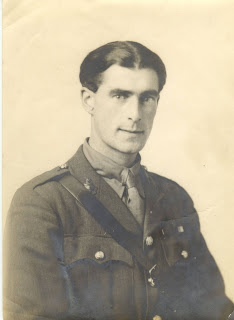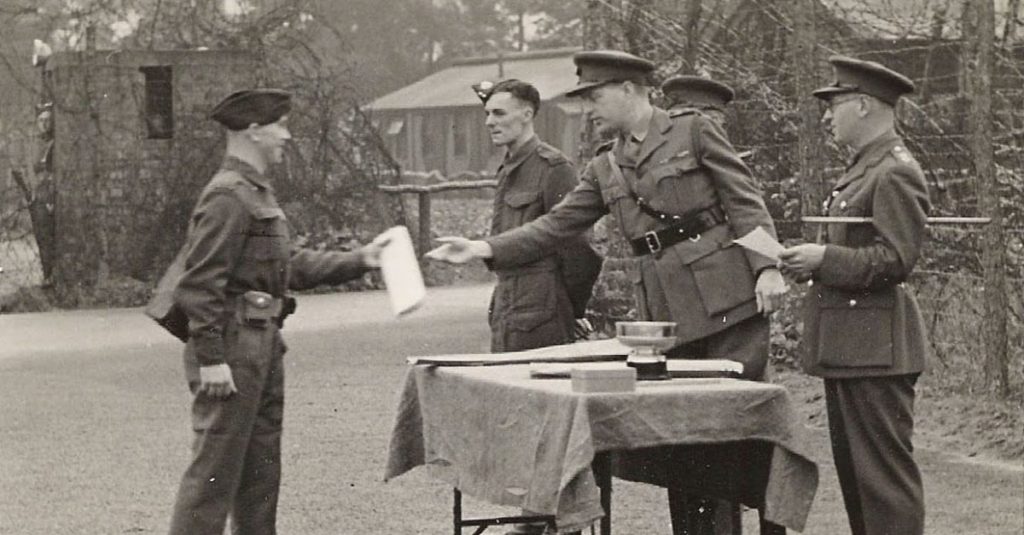A few months ago, I came across this blog post on Huntercombe (Camp 020R) by Tony Percy on his Coldspur site. The post had a number of stunning photographs of a group of officers, including R.W.G. Stephens, inspecting the troops at Camp 020 (Latchmere House). I asked Tony if he could put me in touch with the source of the photographs and he happily directed me to Pete Mackean.
Pete’s grandfather, Charles John Mackean (born 1891) served with the Royal Army Service Corps in the First World War as a private, sapper and sergeant. With the advent of the Second World War, Mackean was reactivated and commissioned as a Second Lieutenant with the Pioneer Corps. He was then transferred to the South Staffordshire Regiment and assigned to Camp 020’s guard detail in May 1942. He seems to have remained at Camp 020 (and 020R) for the remainder of the war before transferring to Diest and then Bad Nenndorf.
The five photographs below are quite stunning as they appear to show Camp 020’s commandant, Lt. Col. Robin W.G. Stephens examining the guard detail. There are other photographs (not shown here) which confirm that the location of this parade inspection is Latchmere House. For me, Stephens is most recognizable in the first photograph. One can see the glint of the monocle in his right etc and his facial features seem most similar to the other photographs of him with which I am familiar.
At the same time, a few features of his uniform also point towards this officer being Stephens:
- he has black buttons on his uniform which are indicative of a rifle regiment. It has often been written that Stephens wore his Indian Army uniform during the Second World War. These buttons could be those of the Garhwal Rifles or the Gurkha Rifles.
- his cap badge appears to have a cord boss, something that the Garhwal Rifles (and other regiments) wore.
- he is wearing a lanyard on his left shoulder. If it is red, it could be that of the Garhwal Rifles.
- he is wearing jodhpurs which, according to my sources, would seem to be more of an affectation on Stephens part and could hearken back to his time in the Indian Army. The other officers are wearing regular trousers.
Thanks to Nick H. (former Lieutenant Colonel of the Gurkha Rifles) for his assistance with these finger details of uniform dress.
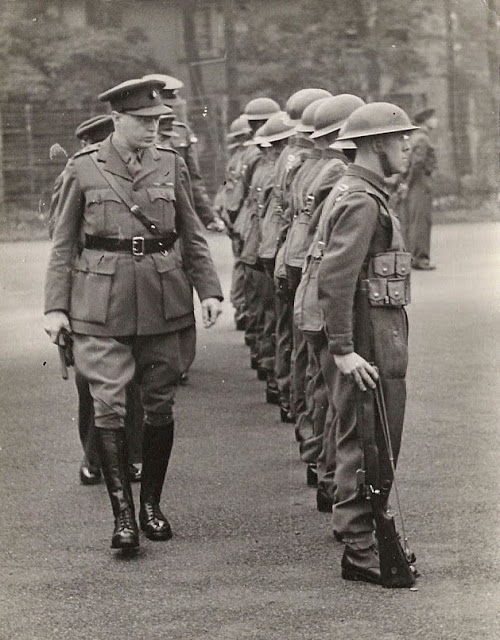
In this photograph, one can clearly see that Stephens’ buttons are black and not the shiny metal as visible on the officer behind him. This side view of Stephens is not as familiar to me and had be questioning whether it was really him or not. One can also see the lanyard on his left shoulder more clearly.
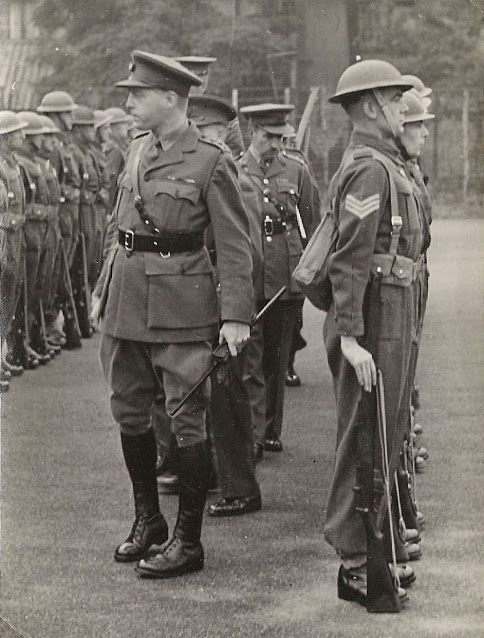
We now come to a series of photographs in which two soldiers present (or receive?) some objects to the officers behind the table. Pete had thought that the officer with the swagger stick might be R.A.F. Short but, from the series of photographs in Karel Richter’s file (of their excursion to gather the items Richter had hidden in various hedgerows), we know that Short was actually quite tall (not short). This may be George Frederick Sampson or another officer entirely. The Regimental Sergeant Major is presenting a silver goblet/cup to the officers At first I thought this might be the silver goblet that the staff of Camp 020 presented to Stephens at the end of the war but… it looks entirely different. This side profile of Stephens’ face, similar to the photograph above, also has be wondering if it is Stephens.
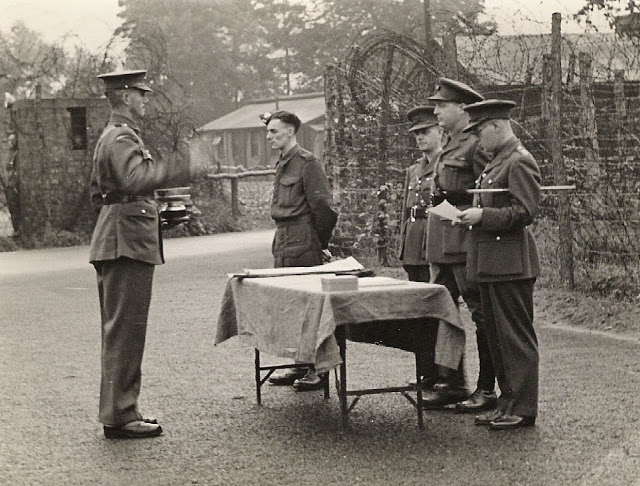
And then, in this photograph, we actually have Stephens smiling, with quite a nice little dimple in his left cheek. Stephens… smiling?
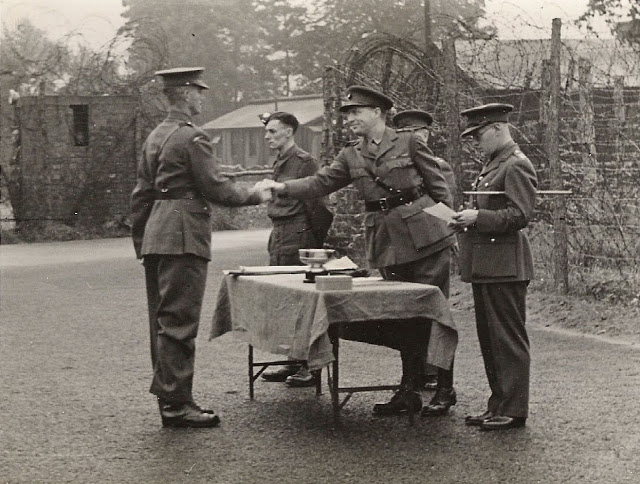
Finally, another soldier presenting something to the officers. This does look, to me, as if the soldier is approaching the table (foot and leg position) and is handing the object to Stephens, who is extending his arm and reaching for it. I am not convinced that the officer with the swagger stick is George Frederick Sampson as he looks a bit too young.
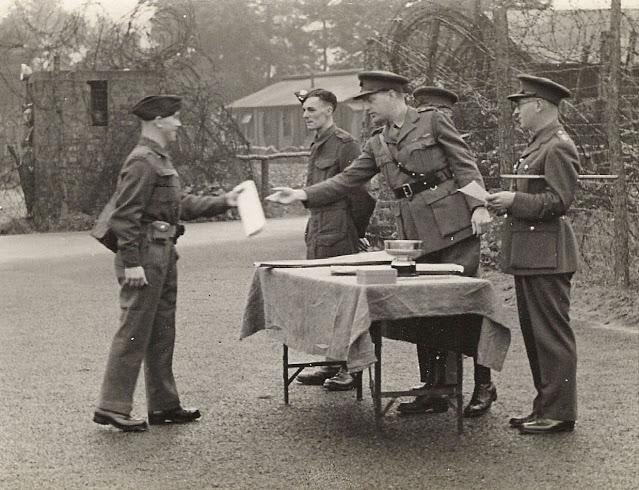
I looked through my folders and pulled together all of the photographs that I have come across on Stephens.
This photograph, published in Christopher Andrew’s history of MI5, may have come from his Security Service application file.

Next, we have a collage of head shots from the Karel Richter expedition. Studying these photographs and his facial features (nose, ears, jaw line, lips), I do think that the five Mackean photographs are indeed of Stephens.

I tried to zoom into the Mackean photographs and think that the photograph below and that of the bottom right photograph above (in the collage) are quite similar. I deliberately flipped the bottom right photograph of the collage in order to get a better angle with which to compare Stephens’ facial profile to the photograph below.
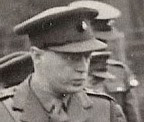
As for the smiling Stephens with the dimple…

The closest photograph would be the photograph of Stephens and his wife Joan, published in Oliver Hoare’s book (Camp 020: MI5 and the Nazi Spies). Stephens is actually smiling in this photograph and is also sporting a cute dimple in his left check.
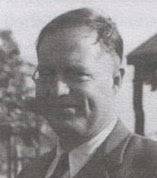
Many thanks to Pete Mackean for sharing these photographs. Such discoveries always give me hope that there is another information out there which might surface, one day.
And… finally… a picture of Charles John Mackean from the First World War. It is thanks to him that we have these amazing photographs of Stephens from Latchmere House!
